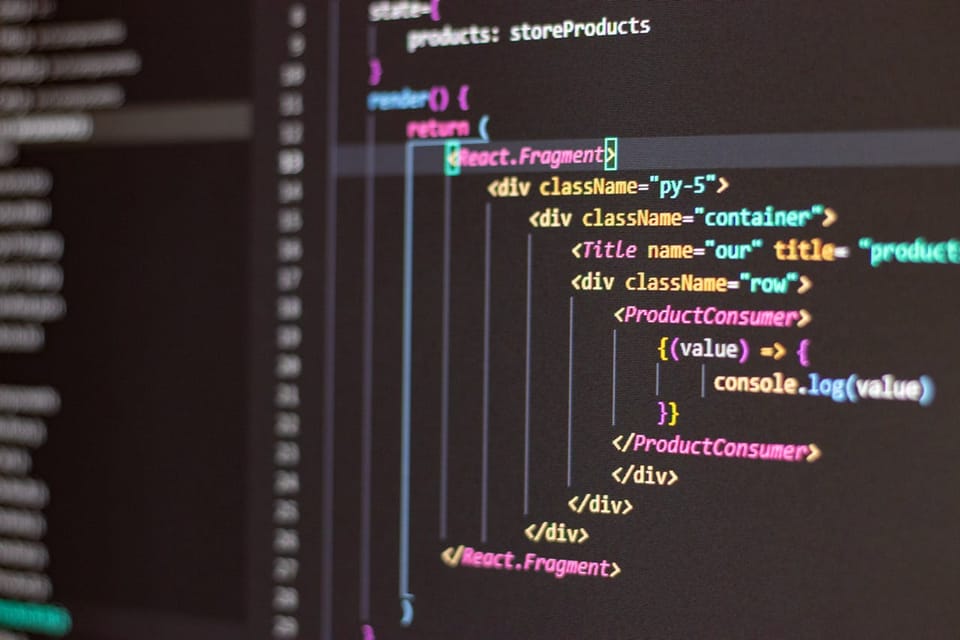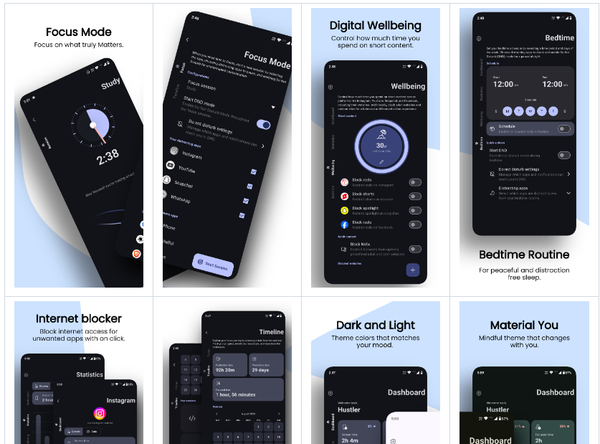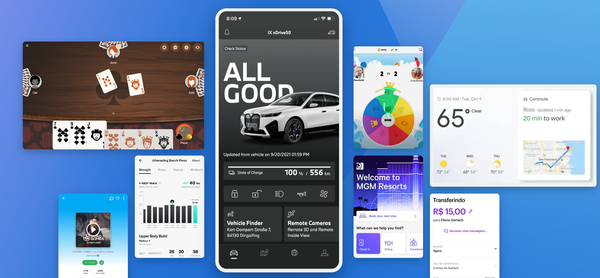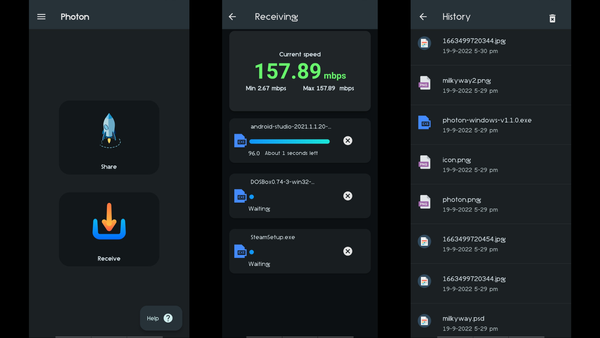Flutter vs. React Native: A Comprehensive Comparison
Table of Content
As mobile app development continues to evolve, developers are increasingly turning to cross-platform frameworks to build applications for both iOS and Android simultaneously.
Two of the most popular frameworks in this space are Flutter and React Native. Each has its own strengths and weaknesses, making it essential for developers to understand their differences before deciding which to use.
In this article, we'll compare Flutter and React Native in terms of code stability, productivity, performance, and community support. We'll also highlight some popular open-source projects built with each framework.
What is Flutter?
Flutter is an open-source UI software development toolkit created by Google. It allows developers to create natively compiled applications for mobile, web, and desktop from a single codebase.
Flutter uses the Dart programming language, and its architecture is based on widgets, which are the building blocks of the user interface.
What is React Native?
React Native is a popular open-source framework developed by Facebook for building mobile applications using JavaScript and React.
It enables developers to write applications for iOS and Android with a single codebase, leveraging native components to provide a near-native performance experience.
Comparison of Flutter and React Native
1. Code Stability
- Flutter:
- Pros: Flutter’s use of the Dart language provides a stable and robust development environment. The framework’s strong typing and comprehensive standard library contribute to fewer runtime errors and a more predictable codebase.
- Cons: Dart is less widely known than JavaScript, which can pose a learning curve for developers new to the language.
- React Native:
- Pros: React Native benefits from the stability of JavaScript and the React ecosystem, which are both mature and widely adopted. Hot reloading and a large number of libraries and tools contribute to a stable development experience.
- Cons: JavaScript’s dynamic typing can lead to more runtime errors compared to statically-typed languages like Dart. This can sometimes affect code stability.
2. Productivity
- Flutter:
- Pros: Flutter’s hot reload feature allows developers to see changes in real-time without restarting the application, significantly boosting productivity. The widget-based architecture simplifies the UI design process.
- Cons: The relatively smaller ecosystem and fewer third-party libraries can sometimes slow down development, especially for niche functionalities.
- React Native:
- Pros: React Native’s hot reloading, combined with the vast JavaScript ecosystem, offers high productivity. The availability of numerous libraries and community packages accelerates development.
- Cons: Dependency on third-party libraries for many functionalities can lead to version compatibility issues and increased maintenance efforts.
3. Performance
- Flutter:
- Pros: Flutter applications often perform better because they are compiled to native ARM code, and the framework eliminates the JavaScript bridge, reducing communication overhead. The consistent 60fps performance is a significant advantage.
- Cons: The larger app size compared to native apps can be a downside for some use cases, especially when initial download size is a concern.
- React Native:
- Pros: React Native offers near-native performance by using native components and rendering. It is suitable for many performance-sensitive applications, especially with optimizations.
- Cons: The JavaScript bridge can introduce performance bottlenecks, particularly for complex animations and heavy computational tasks.
4. Community Support and Ecosystem
- Flutter:
- Pros: Flutter’s community is rapidly growing, with strong support from Google. The official documentation is comprehensive, and the framework has a dedicated package repository (pub.dev).
- Cons: The ecosystem is not as mature as React Native’s, meaning fewer third-party libraries and tools are available.
- React Native:
- Pros: React Native has a large, active community and extensive ecosystem. It benefits from the popularity of React and JavaScript, providing access to numerous libraries, tools, and resources.
- Cons: The large number of third-party dependencies can sometimes lead to fragmentation and quality issues.
Use Cases and Popular Open-Source Projects
Flutter
- Use Cases:
- Ideal for creating highly-customized UIs and applications that require smooth performance and rapid development cycles.
- Suitable for startups and companies looking to quickly iterate on their app’s design and features.
- Popular Open-Source Projects:
- Google’s Stadia app: A cloud gaming service app.
- Invoice Ninja: A free, open-source invoicing app.
- Flutter Gallery: A showcase of Flutter’s capabilities.
React Native
- Use Cases:
- Best for applications that need to leverage a vast array of third-party libraries and integrations.
- Suitable for projects where code sharing between web and mobile platforms is beneficial.
- Popular Open-Source Projects:
- Facebook’s Ads Manager: A tool for managing Facebook ads.
- Discord: A popular chat app for gamers.
- React Native Elements: A UI toolkit for React Native.
5 Reasons Why Developers Prefer Flutter Over React Native
1. Unified Codebase and Consistent UI/UX
Flutter offers a unified codebase for both iOS and Android platforms, which ensures consistent UI/UX across all devices. This consistency is achieved because Flutter uses its own rendering engine and pre-designed widgets, unlike React Native, which relies on native components that can vary between platforms.
2. Faster Development with Hot Reload
Flutter's "hot reload" feature allows developers to see changes in real-time without restarting the app. This significantly speeds up the development process, as it enables instant feedback and quick iterations. React Native also has a hot reload feature, but many developers find Flutter's implementation more robust and reliable.
3. Performance Efficiency
Flutter compiles directly to native ARM code, which leads to better performance and smoother animations. In contrast, React Native uses a JavaScript bridge to communicate with native modules, which can sometimes result in performance bottlenecks, especially in complex applications.
4. Extensive Widget Library
Flutter comes with a comprehensive library of pre-designed widgets that follow Google's Material Design and Apple's Cupertino design guidelines. This makes it easier for developers to create aesthetically pleasing and functional UIs without relying heavily on third-party libraries, as often needed in React Native.
5. Strong Community and Google Support
Backed by Google, Flutter benefits from strong community support and frequent updates. Google's involvement ensures that Flutter remains a priority, with continuous improvements and new features being rolled out regularly.
While React Native also has a large community, the dedicated support from Google gives Flutter an edge in terms of reliability and long-term viability.
6. Growing Ecosystem and Tooling
The Flutter ecosystem is rapidly expanding, with a growing number of plugins, packages, and tools available to simplify development tasks.
This includes everything from state management solutions to testing and debugging tools, making it easier for developers to find the right tools for their projects. React Native also has a rich ecosystem, but Flutter's growth trajectory and strong community support make it a compelling choice.
7. Seamless Integration with Firebase
Flutter provides seamless integration with Firebase, Google's comprehensive app development platform. This integration enables developers to easily add backend services like authentication, cloud storage, and real-time databases to their Flutter apps. While React Native can also integrate with Firebase, the process is often more straightforward and better documented with Flutter.
8. Rich Set of Built-in Animations and Transitions
Flutter's built-in support for animations and transitions allows developers to create smooth and intricate animations effortlessly. The framework includes a variety of pre-built animation widgets and tools, making it easier to implement complex animations without extensive coding. React Native, on the other hand, often requires additional libraries or custom code to achieve similar effects.
9. Dozens of Starter Projects and Open-Source Templates
Flutter offers a plethora of starter projects and open-source templates that cater to various use cases, from simple apps to complex enterprise solutions.
These resources can significantly reduce development time by providing a solid foundation that developers can build upon, whereas finding high-quality, comprehensive templates in React Native can be more challenging.
Conclusion
Both Flutter and React Native offer powerful solutions for cross-platform mobile development, each with its own set of advantages and drawbacks. Flutter excels in providing a consistent and performant experience with its widget-based architecture and Dart language, making it a great choice for highly-customized UIs.
React Native, on the other hand, leverages the vast JavaScript ecosystem and the React library, offering a more familiar environment for web developers and extensive community support.
Choosing between Flutter and React Native ultimately depends on the specific needs of your project, your team's expertise, and the long-term maintenance considerations. By understanding the strengths and weaknesses of each framework, you can make an informed decision that aligns with your development goals and resources.




![16 Open-source Free Flutter Dashboards for Desktop, Web and Mobile [October 2024]](/content/images/size/w600/2024/10/screenshot20240408-1.png)






